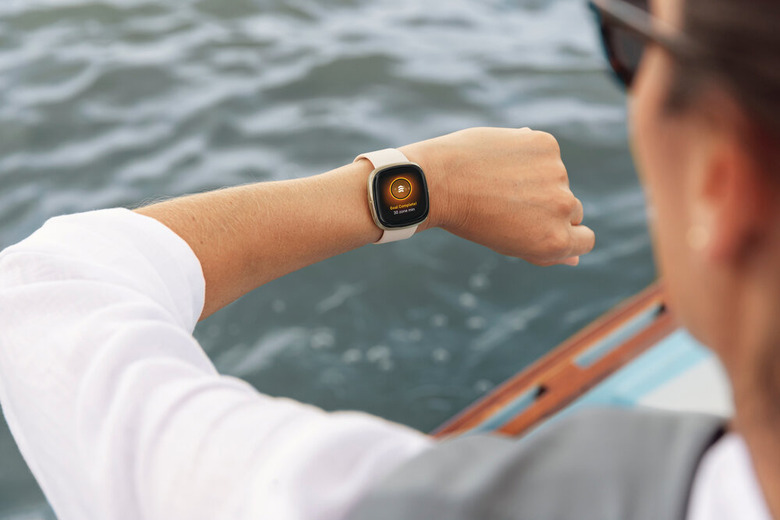Fitbit Might Be Working On A Totally New Kind Of Wearable
Google's Fitbit already sells a collection of wearable devices that should be on anyone's list if they're looking for health-tracking gadgets. From fitness trackers to smartwatches, Fitbit is an alternative for buyers looking for a non-Apple Watch device. Fitbit's next invention might be a smart ring wearable that offers a few features you won't find on any wrist-worn devices out there.
The ring could support tracking specific biometric data, like blood oxygen saturation (SpO2) and blood pressure. These features are already available from some smart devices. The Apple Watch 6 comes with a built-in pulse oximeter, but the sensor isn't as reliable as traditional models. The Watch doesn't have a blood pressure sensor, however.
These are key parameters to track continuously. Checking the blood pressure passively would help patients monitor their conditions better than before. Physicians could further fine-tune treatment based on the extra data points. Oxygen saturation is a crucial element to monitor during the pandemic, but also in other settings.
The device might also measure the pulse and glucose levels, a patent explains. The latter would be a game-changer for the industry. But the new Fitbit patent focuses mostly on SpO2 readings.
The Fitbit smart ring solution
A Fitbit smart ring equipped with such sensors would be a great addition to one's arsenal of tracking devices. The gadget could be worn continuously, in tandem with others. Or it could be work just at night, while other devices recharge. That's also when people are less likely to be aware of changes in their health parameters.
Motion sensors built into the device could be used to instruct the gadget when to collect data. They would determine the opportune moment for collecting health parameters, such as when the wearer sits still.
The device would use photodetector sensors would support the transmissive examination of blood oxygen levels. These readings would be more accurate than the sensors in wrist-worn devices that analyze reflected light. The ring would act as a traditional pulse oximeter. It would interpret light readings after light passes through the finger and reaches the other side.
The Fitbit smart ring would pair with a smartphone via Bluetooth or NFC and pass the readings to the app.
It's unclear when and if Google's Fitbit arm will make a smart ring with such advanced built-in sensors. But the new Fitbit patent proves the company's interest in this particular technology.
The Fitbit smart ring patent offers various design choices for the wearable. The ring could fit a regular finger, while a larger device could be created for the thumb. A combination of rings is also a possibility, with each device serving a particular purpose.
It's too early to tell how much a Fitbit smart ring would cost. The device would compete directly against gadgets like the $300 Oura Ring. The device measures heart rate, heart variability, respiration rate, and body temperature at night.
